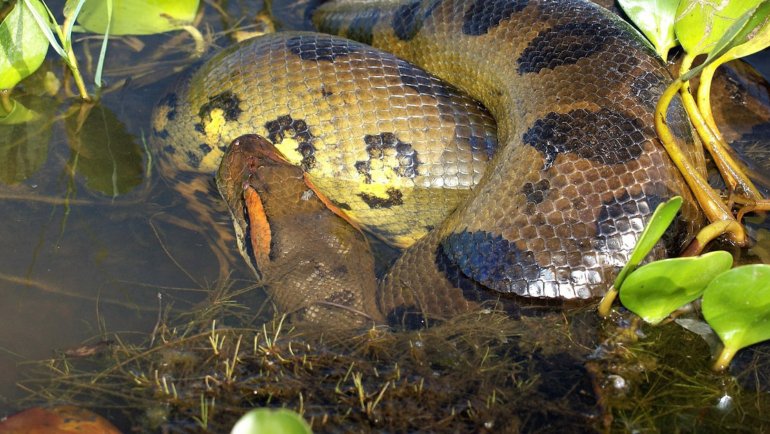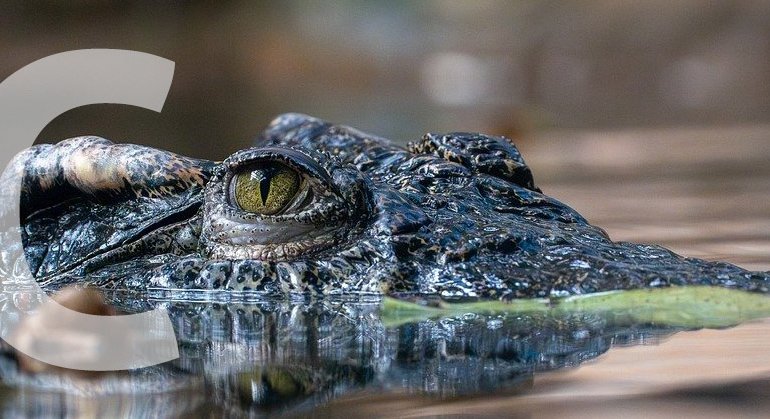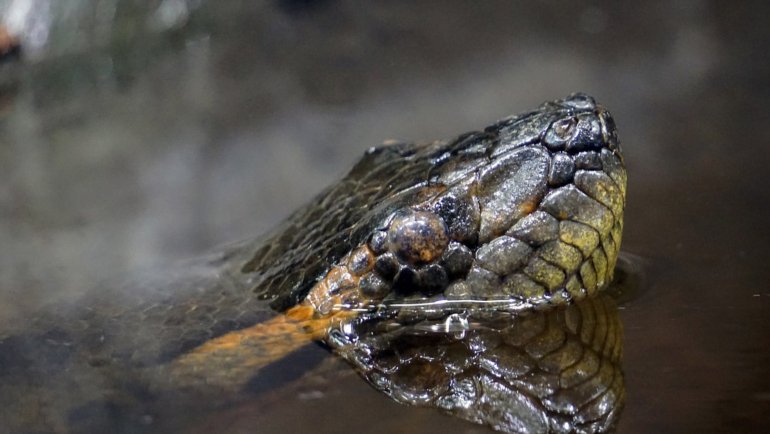Welcome to the fascinating world of the boa constrictor, a snake that has both captivated and frightened people for centuries. Known for its unique hunting technique of constriction, this snake is a marvel of evolutionary engineering.
Whether you’re an enthusiast, a potential pet owner, or just plain curious, this article aims to offer an in-depth look into the biology, behavior, and conservation of this remarkable reptile.
The Boa Constrictor at a Glance
Classification
| Kingdom: | Animalia |
| Phylum: | Chordata |
| Class: | Reptilia (Reptiles) |
| Order: | Squamata |
| Family: | Boidae |
| Genus: | Boa |
| Species: | Boa constrictor |
Essential Information
| Average Size: | 6–13 feet (1.8–4 m) |
| Average Weight: | 13–60 pounds (6–27 kg) |
| Average Lifespan: | 20–30 years |
| Geographical Range: | South America |
| Conservation Status: | Least Concern (IUCN Red List) |
Species and Subspecies
The term “boa constrictor” is often used as a blanket term, but it actually refers to a specific species with numerous subspecies. These subspecies vary mainly in size, coloration, and geographical distribution. Some of the well-known subspecies are:
- Boa constrictor constrictor: Often called the “true” red-tailed boa, native to South America.
- Boa constrictor imperator: Commonly found in Central America and parts of South America, it is now considered a separate species, Boa imperiator.
- Boa constrictor amarali: Found in Bolivia, generally smaller and more grayish in color.
These subspecies can be differentiated by their color patterns, scale counts, and often, their preferred habitats.
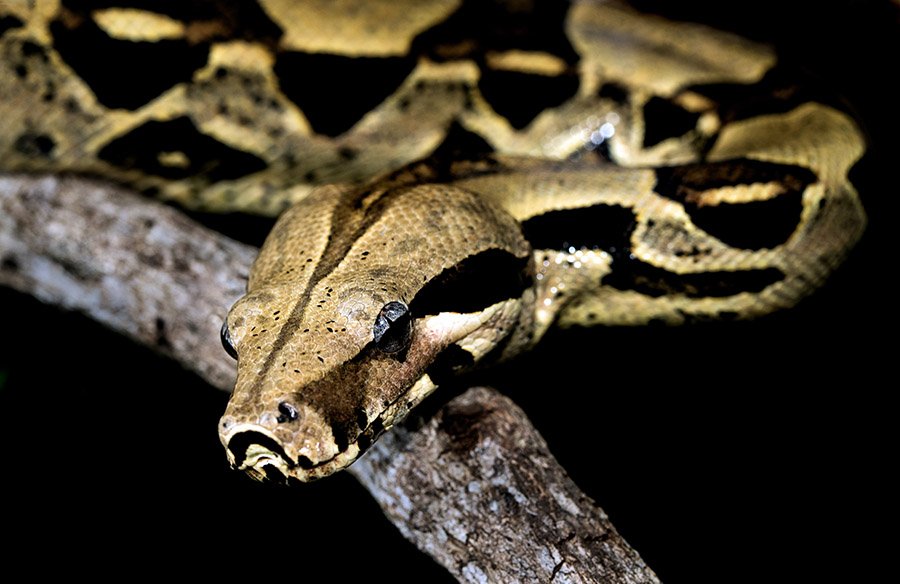
Description
The boa constrictor is a large, heavy-bodied snake, characterized by its beautifully intricate pattern of saddles and spots. Their coloration can vary considerably, depending on their geographical location, and can include shades of brown, gray, or cream with darker markings. The body is muscular and robust, well-adapted for constriction, which is the primary method of subduing prey.
The anatomy of the boa constrictor is specially designed for its lifestyle. It has a particularly large lung on the right side and smaller vestigial lung on the left, which allows for better airflow when the snake is wrapped around its prey. They have hooked teeth that are angled backward to help hold onto prey.
Sexual dimorphism is present, but not prominent, in boa constrictors. Typically, females are larger and heavier than males. Adult females can grow up to 13 feet (about 4 meters) and weigh around 60 pounds (about 27 kg), while males usually max out at 10 feet (about 3 meters) and weigh less.
Habitat and Distribution
Boa constrictors are found in a variety of habitats ranging from tropical rainforests to arid semi-deserts. They are located in South America, throughout the Amazon basin, in large parts of Brazil, to northern regions of Argentina.
These adaptable snakes can even be found in cultivated fields and human settlements, where they hunt rats and other pests.
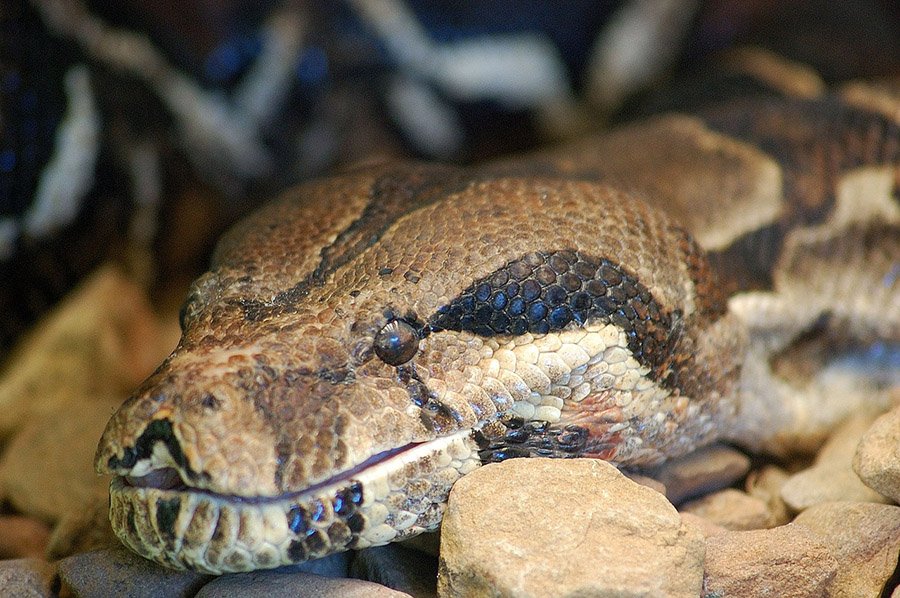
Behavior
Boa constrictors are generally solitary animals and are primarily nocturnal, preferring to hunt in the cover of darkness. However, they can be active during the day when the conditions are favorable. They are excellent swimmers but prefer to stay on land or in trees.
Social structure is simple: aside from the mating season, these snakes prefer to be alone. Communication is mostly tactile due to the limited hearing abilities of snakes. They do, however, use pheromones for mating and other social interactions.
In terms of defensive behavior, boa constrictors can hiss loudly and strike when threatened, but they are generally more docile than many other large snake species. Their main form of locomotion is “serpentine,” where the body is kept in a straight line. They can also “sidewind” over loose and shifting surfaces like sand.
Diet and Hunting/Feeding Behavior
Boa constrictors are obligate carnivores, which means their diet exclusively consists of meat. They prey on a variety of animals, including rodents, birds, and even larger mammals like opossums and monkeys. Young boa constrictors often stick to smaller prey like lizards and amphibians.
The hunting strategy of the boa constrictor is that of ambush and constriction. The snake will typically hide and wait for an unsuspecting animal to pass by.
Once in range, the boa strikes quickly to grab the prey with its teeth and then wraps its body around the captured animal, constricting it until it succumbs to asphyxiation. Contrary to popular belief, the boa does not crush its prey but rather holds it tightly, preventing it from drawing air into its lungs.
Predators
In the wild, juvenile boa constrictors are at risk from various predators, including birds of prey, larger snakes, and certain mammals like raccoons and ocelots.
Adult boas have fewer natural predators, but they can still fall victim to larger animals such as jaguars in the wild or humans, who may hunt them for their skin or simply kill them out of fear.
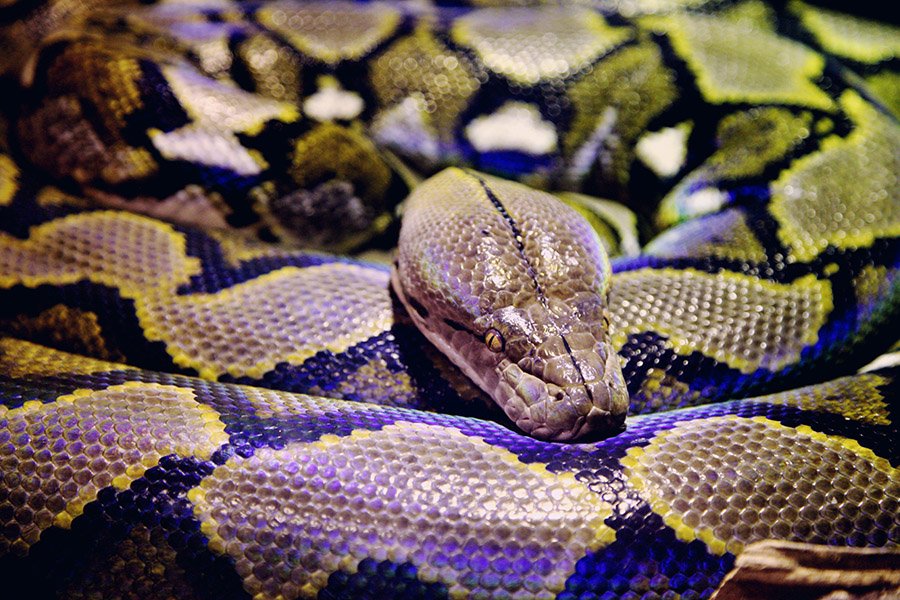
Reproduction and Life Cycle
Boa constrictors are ovoviviparous, which means that the eggs are fertilized and develop within the female’s body, and she gives birth to live young. Mating typically occurs during the dry season. During this time, males may engage in “combat dances” to win the favor of a receptive female.
The gestation period can last from 100 to 150 days, after which the female gives birth to a litter ranging from 10 to 64 young snakes, each about 15-20 inches (38-51 cm) long. Mothers do not provide care for their offspring, who are born fully developed and must fend for themselves from birth.
Boa constrictors can live up to 20-30 years in the wild, although many do not reach their full lifespan due to predation and other natural hazards.
Conservation and Threats
The boa constrictor is currently classified as “Least Concern” on the IUCN Red List of Threatened Species. However, it does face some threats that could impact its population in the long term.
Habitat destruction and fragmentation due to agricultural expansion and human settlement are notable concerns. The snake is also hunted for its skin, which is used in the fashion industry, and captured for the exotic pet trade.
There are not many specific conservation programs exclusively for the boa constrictor, but general wildlife protection laws and habitat conservation efforts do help in preserving their natural environment. Awareness and educational programs aim to minimize human-snake conflicts and promote coexistence.
Fun Facts
- Super Sensors: Boa constrictors have heat-sensing pits on their faces that allow them to detect the warmth of potential prey in complete darkness.
- Non-Venomous: Despite their intimidating appearance, boas are non-venomous and kill their prey through constriction.
- Varied Diet: Boas have been known to eat bats, capturing them right out of the air as they fly by.
- Longevity: In captivity, some boa constrictors have been known to live for over 40 years.
- Combat Dances: Male boas engage in wrestling matches, known as “combat dances,” to win over females. The fights are usually non-violent and consist of trying to push each other’s head to the ground.
Frequently Asked Questions
Are boa constrictors venomous?
No, boa constrictors are not venomous. They subdue their prey by constriction.
How big can a boa constrictor get?
Boa constrictors can grow up to 13 feet (4 meters) in length, although most are between 6-9 feet (1.8-2.7 meters).
What do boa constrictors eat?
They eat a variety of animals, including rodents, birds, and even larger mammals like opossums. Juvenile boas usually eat smaller prey like lizards and amphibians.
Where do boa constrictors live?
They are primarily found in Central and South America, but their range extends from northern Mexico to Argentina.
How do boa constrictors reproduce?
Boa constrictors are ovoviviparous, meaning they give birth to live young. The gestation period can last from 100 to 150 days, and a single litter can have up to 64 young.
Are boa constrictors good pets?
Boa constrictors are popular in the pet trade, but they require specialized care and should only be kept by those who are well-versed in snake husbandry.
